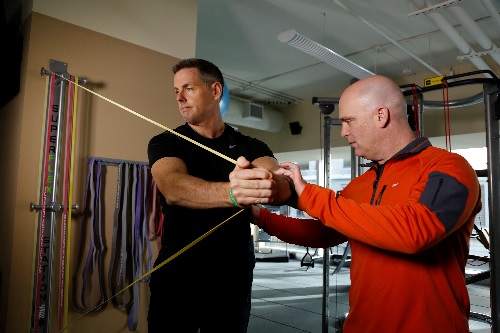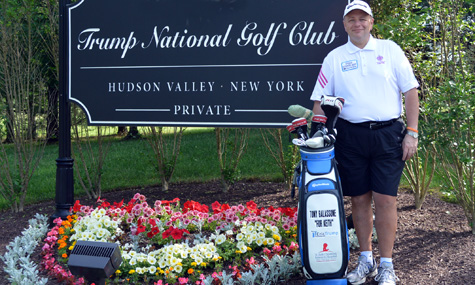| Fifth Hole at Quaker Ridge photo by Evan Schiller |
The United States Golf Association has selected Quaker Ridge Golf Club, in Scarsdale, N.Y., as the host site of the 2018 Curtis Cup Match. The dates of the Match are June 8-10.
This will be the second USGA championship conducted at Quaker Ridge Golf Club. The club hosted the 1997 Walker Cup Match, won by the USA Team over a GB&I Team that included a future U.S. Open champion in 17-year-old Justin Rose. The USA, captained by A. Downing Gray Jr., regained the Cup by an 18-6 margin, having lost two years earlier at Royal Porthcawl Golf Club in Wales.
“The USGA is excited to return to Quaker Ridge Golf Club for this celebration of women’s amateur golf,” said Daniel B. Burton, USGA vice president and chairman of the Championship Committee. “Quaker Ridge provided a stern and fair test for the 1997 Walker Cup competitors, and we are confident that it will do the same for these elite female amateurs in four years, when the Match is contested for the 40th time.”
Quaker Ridge will become just the third club in the United States to host both the Walker Cup and Curtis Cup, joining The Minikahda Club in Minneapolis (1957 Walker Cup, 1998 Curtis Cup) and Merion Golf Club in Ardmore, Pa. (1954 Curtis Cup, 2009 Walker Cup).
“We are honored that the USGA has selected Quaker Ridge Golf Club to host the 2018 Curtis Cup Match,” said Marc Friedman, Quaker Ridge club president. “We are thrilled that outstanding amateur golfers from the United States and Great Britain and Ireland will be competing on the Quaker Ridge course in another historic match. Our members and staff look forward to providing a true test of golf for the players, and a wonderful viewing experience for the spectators.”
Quaker Ridge was founded in 1915 under the name Metropolitan Golf Links and featured a nine-hole course designed by John Duncan Dunn. In 1916, the club name was changed to Quaker Ridge Golf Club and renowned architect A.W. Tillinghast was commissioned to redesign seven holes and create 11 new holes. The course opened in its current configuration in 1918, and Robert Trent Jones (1965), Rees Jones (1993) and Gil Hanse (2009-12) have overseen modifications.
Quaker Ridge has a long history of hosting elite competition, both professional and amateur. It has hosted three Metropolitan Open Championships, including the 1936 championship won by five-time major champion Byron Nelson. It has also hosted four Metropolitan Amateur Championships and four Metropolitan PGA Championships.
The 2018 Curtis Cup will be the 71st USGA championship conducted in the state of New York. On Aug. 4-10, 2014, Nassau Country Club in Glen Cove will host the U.S. Women’s Amateur Championship. Winged Foot Golf Club in Mamaroneck will be the host site of the second U.S. Amateur Four-Ball Championship in 2016.
The Curtis Cup Match is a biennial team competition contested by female amateur golfers. One team representing the United States and one team representing Great Britain and Ireland alternate hosting the Match. The teams consist of not more than eight players and a captain.
The United States leads the all-time Curtis Cup series with a record of 28-7-3. The United States won the 2014 Match, which was conducted in June at St. Louis (Mo.) Country Club, by a 13-7 margin.
The 2016 Curtis Cup Match will be held June 10-12 at Dun Laoghaire Golf Club, near Dublin, Ireland.

















